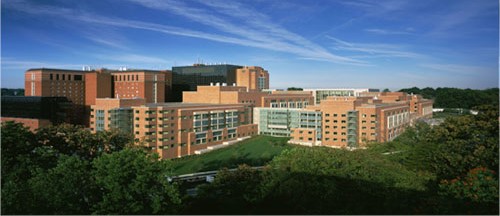Dr. James Fielding Hejtmancik and his team at the National Eye Institute’s Ophthalmic Genetics and Visual Function branch, use linkage and association studies to better understand the genetic mechanisms of inherited eye disease. The team investigates both Mendelian and complex diseases as well as functional work with a focus on cataracts, retinal degenerations, myopia and corneal dystrophies. “If it affects vision, we pretty much study it,” commented Dr. Hejtmancik, the lab’s director.
With uncertain funding levels, the small lab has created strong collaborations across the globe with other centers and labs studying eye disease. Their collaborations provide access to larger data sets which in turn allow for more broad analysis. Currently, the lab is completing and publishing five to ten studies a year with a focus on linkage analysis and candidate gene studies.
When the team at the NEI began conducting association studies, the lab was using a software that was a bit cumbersome in the opinion of Dr. Hejtmancik. So, they began evaluating alternatives to their then current software package.
One of the things that made Hejtmancik a believer in SNP & Variation Suite (SVS) was the software’s transparency. “The big attraction for us is that the software is very transparent. You guys know what you’re doing. You know the analytical methods and the description of the approach is quite good.” Hejtmancik and his team also enjoy SVS’s ease of use. “SVS is extremely user-friendly. I can use it to teach my fellows who are, for the most part, Ophthalmologists, not researchers. It lets them concentrate on the association work and not worry too much about learning the ins and outs of the program because, as I said, it’s pretty intuitive and user-friendly.”
When it comes to training his colleagues on SVS, Dr. Hejtmancik likes to take a layered approach. He says he could get them up and running on the software within a week, but he prefers to take it slow. In order to build comfort and confidence, Hejtmancik uses the resources provided by Golden Helix in his training. “We use both the webinars and the eBooks for training, and I also teach a course using a variety of sources for association studies. This provides them with the confidence they need to essentially be independent.”
In addition to the software’s ease of use, what turned Dr. Hejtmancik into a longtime customer is the support he receives from Golden Helix. “We just receive such wonderful support from you guys, everyone starting with Greta Peterson, and continuing.” At certain times, the team’s research requires a customized workflow, for which they turn to the Golden Helix support team. “On occasion, I’ve asked for specific scripts usually the support team gives them back to us within a few days. I don’t know how they do it, they’re just a phenomenon!”
Dr. James Fielding Hejtmancik studied biochemistry as an undergraduate at Rice University and then went on to the Baylor College of Medicine on a six-year MDBA program where he developed an interest in reproductive endocrinology. While in the NDBA program, Hejtmancik took time out to complete a PhD in the Department of Cell Biology on protein synthesis in the oviduct under estrogen stimulation. From there, Dr. Fielding grew an interest in inherited diseases which led him to genetics in which he completed a few fellowships and ultimately found his niche, specifically in diseases of the eye and settled in at the National Eye Institute. Overall you can certainly tell that Dr. Fielding and his associates have a strong passion for the work that they do. When asked about his work Fielding states, “One of the biggest rewards is that the work I do is very interesting.” In fact, even on government holidays, he said that at least half of the team’s researchers can found in the lab continuing their investigations. Now that is dedication.
